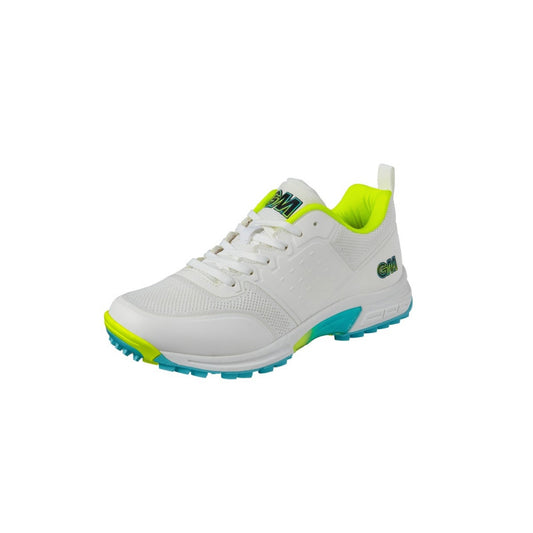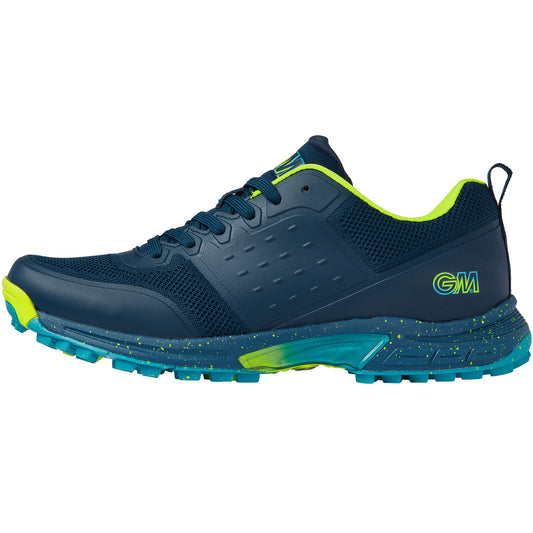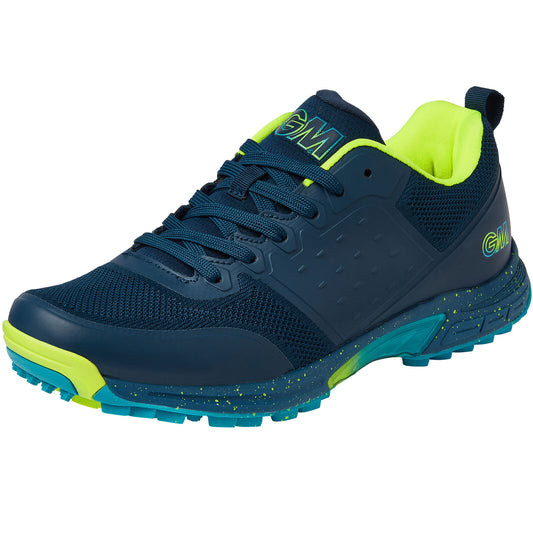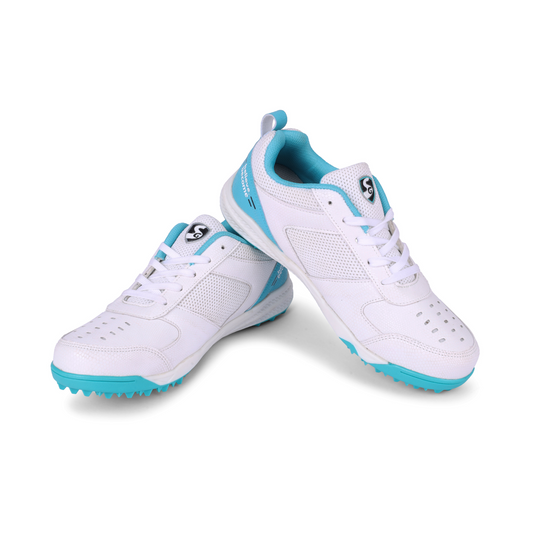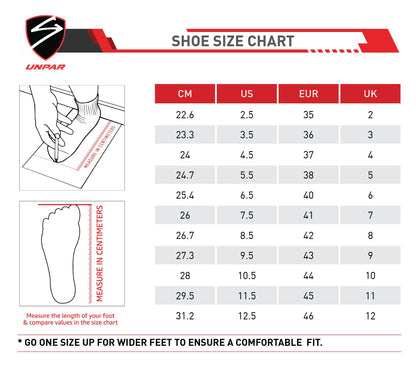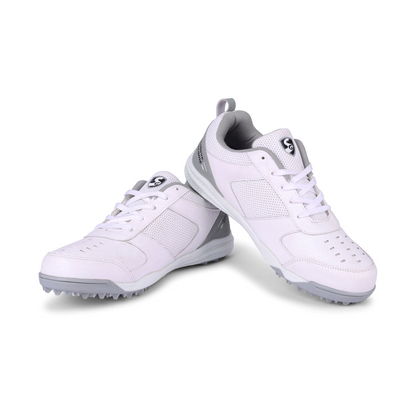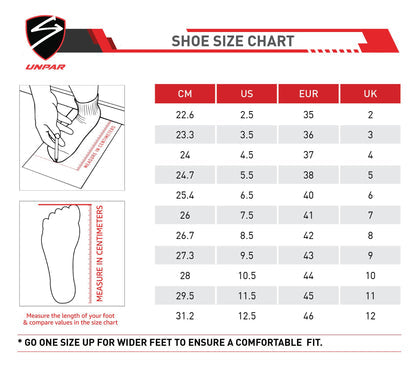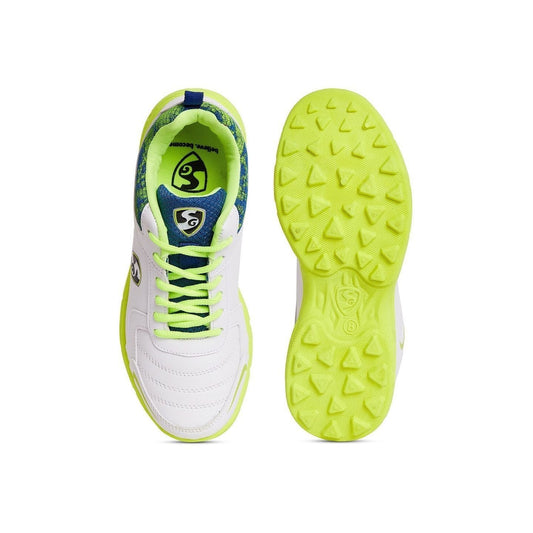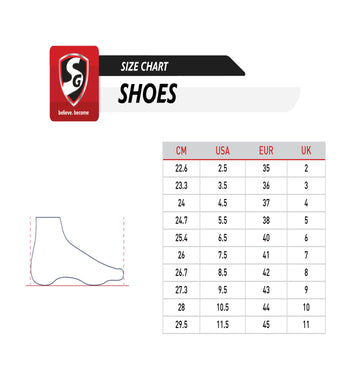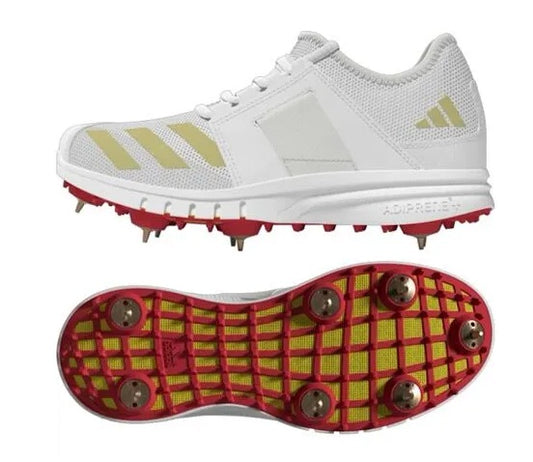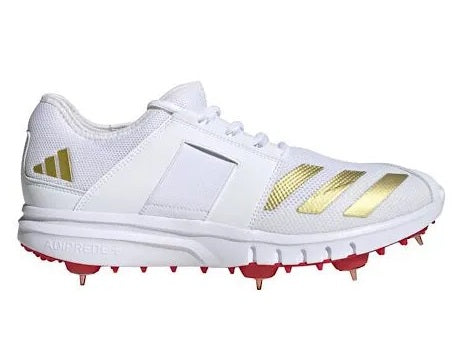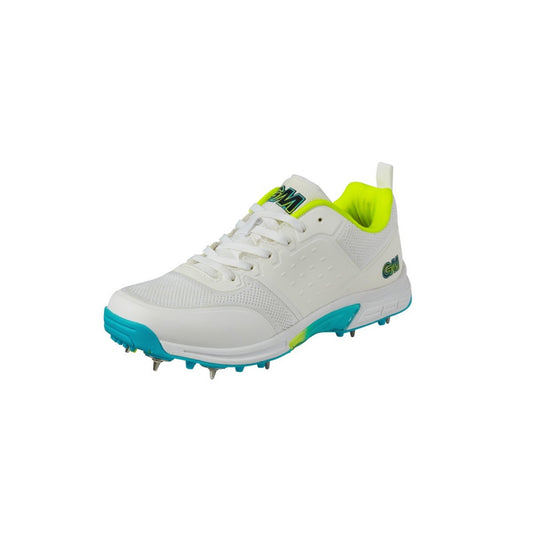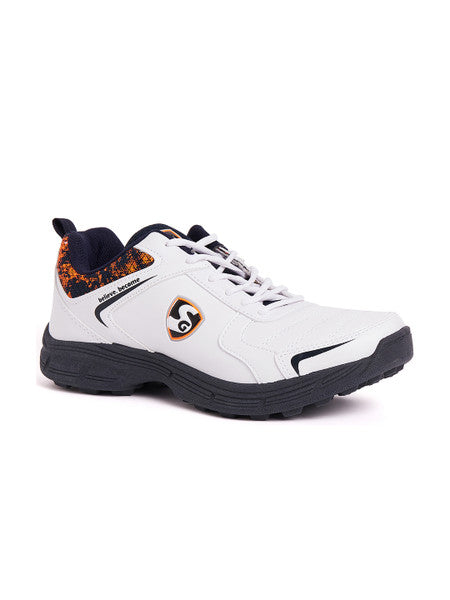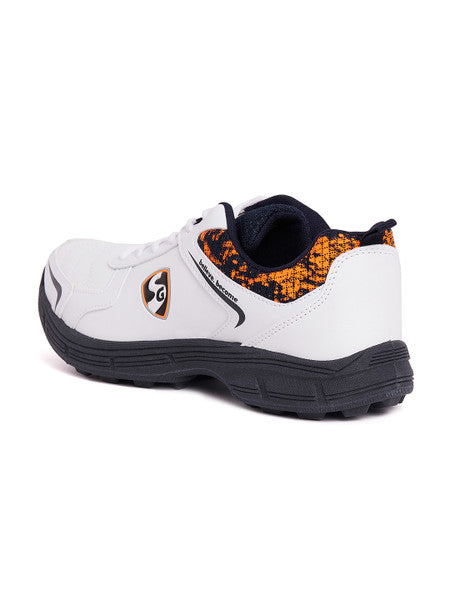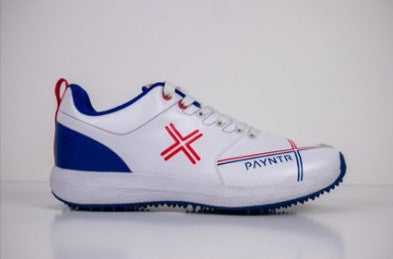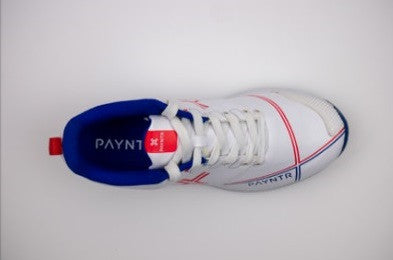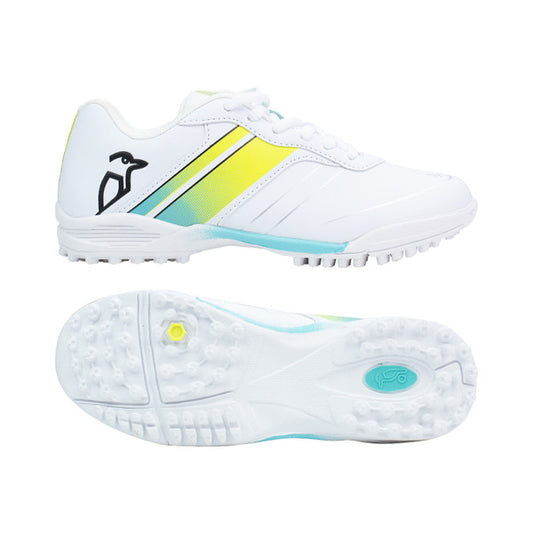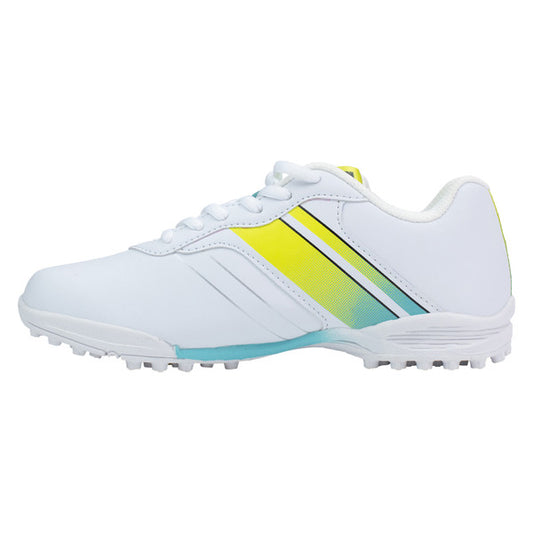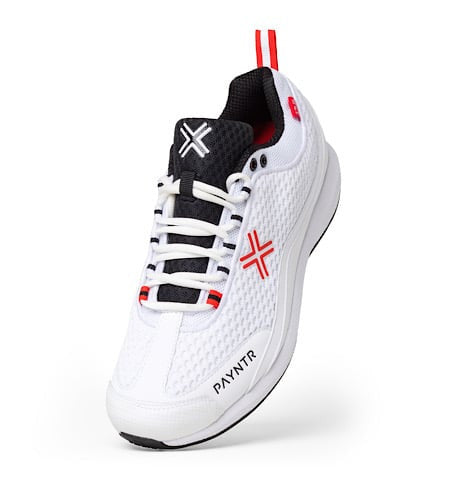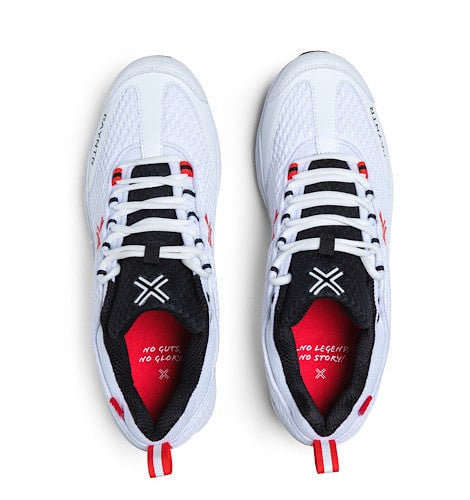Youth Cricket Shoes - Proper Support for Growing Feet
Finding the right cricket shoes for your young player is about more than just looking the part – it's about protecting their developing feet, supporting their performance, and keeping them comfortable throughout long practice sessions and matches.
Our youth cricket shoes collection has been carefully selected with growing feet in mind, featuring proper support, appropriate traction, and the durability needed for enthusiastic young players. With over two decades of experience fitting cricket shoes for children, we understand the unique challenges: rapid growth spurts, different playing surfaces, and the need for shoes that work for batting, bowling, and fielding.
This guide will help you navigate these choices and find the perfect cricket shoes for your young cricketer's needs and budget.
Key Features to Consider
Selecting cricket shoes for your child involves several important factors that affect both performance and foot health:
Proper Fit and Growth Accommodation
The most critical aspect is getting the right fit now while allowing for growth. Cricket shoes should have about half an inch (1cm) of space beyond the longest toe, but not so much room that the foot slides around. Quality shoes should last 6-12 months depending on growth spurts.
Playing Surface Compatibility
- Rubber Studs: Best for most youth cricket, providing good grip on various surfaces including artificial pitches
- Metal Spikes: Reserved for serious young players on natural grass surfaces (usually 13+ years)
- Multi-Surface Soles: Versatile option for players who practice on different surfaces
Support and Protection
Youth cricket shoes need proper ankle support and toe protection. Look for reinforced toe areas, cushioned midsoles for comfort during long games, and adequate ankle support without being restrictive.
Breathability and Comfort
Young feet sweat more than adult feet, so breathable materials are essential. Mesh panels, moisture-wicking linings, and quality ventilation help prevent blisters and keep feet comfortable during extended play.
Top Youth Cricket Shoes
All-Rounder Junior Pro - Best Overall Choice
Perfect for young players who bat, bowl, and field, these versatile shoes provide excellent all-around performance. The balanced design offers proper support without specializing in one area.
Key Features:
- Comfortable fit for extended wear
- Durable rubber stud configuration
- Reinforced toe protection
- Breathable mesh upper
- Suitable for all playing surfaces
- Excellent value for money
Perfect for: Most young cricketers, club cricket, school teams, and players who perform multiple roles.
Comfort Batting Specialist - Extended Play Excellence
Designed for young batsmen who spend long periods at the crease, these shoes prioritize comfort and flexibility with enhanced cushioning to reduce fatigue.
Key Features:
- Superior midsole cushioning
- Lightweight construction
- Flexible sole design
- Quick-dry lining
- Optimized for running between wickets
Perfect for: Young batsmen, longer format games, and players who prioritize comfort during extended play.
Youth Fast Bowler Support - Performance and Protection
Engineered for young fast bowlers who need maximum support and stability, providing enhanced ankle support and impact absorption.
Key Features:
- Enhanced ankle support system
- Superior heel impact absorption
- Rigid heel construction for stability
- Professional-grade traction options
- Injury prevention design
Perfect for: Fast bowlers, competitive youth cricket, and players requiring maximum support and protection.
Choosing the Right Shoes for Your Child
Finding the perfect fit involves more than just knowing your child's size:
Size Guide by Age
| Age Range | UK Size Range | Key Considerations | Typical Features |
|---|---|---|---|
| 4-6 years | 1-3 | Comfort and protection priority | Soft materials, easy on/off |
| 7-9 years | 4-6 | Balance of support and flexibility | Moderate support, durable construction |
| 10-12 years | 7-9 | Performance features emerge | Enhanced traction, role-specific options |
| 13-15 years | 10-12 | Adult-level performance needs | Professional features, metal spike options |
Fitting Guidelines
- Toe Space: About 1cm (half inch) beyond the longest toe
- Width: Snug but not tight – no pressure points on sides of feet
- Heel: Should not slip when walking
- Flexibility: Shoe should bend naturally at the ball of the foot
When to Measure: Always measure your child's feet in the afternoon when feet are slightly swollen from daily activity.
Surface Considerations
- School/Club Cricket: Rubber studs work for most surfaces
- Natural Grass: Consider metal spikes for older, serious players
- Artificial Surfaces: Rubber studs are essential (metal spikes often prohibited)
- Indoor Training: Some shoes offer removable studs for versatility
Playing Style Assessment
- Aggressive Players: Look for enhanced durability and protection
- Quick Runners: Prioritize lightweight construction and flexibility
- Growing Rapidly: Consider slightly more room or plan for more frequent replacement
Care and Maintenance
Proper care extends the life of cricket shoes and maintains their performance:
After Each Use
- Remove excess dirt and grass with a soft brush
- Loosen laces completely to allow shoes to air out
- Remove insoles if possible to speed drying
- Never put cricket shoes in direct heat or washing machines
Weekly Maintenance
- Clean with lukewarm water and mild soap
- Check for wear patterns that might indicate fit issues
- Inspect studs for damage or wear
- Allow to dry completely before next use
Signs It's Time to Replace
- Obvious outgrowing (toes touching the front)
- Worn studs that can't be replaced
- Upper material showing significant wear or damage
- Loss of support structure
Parent Q&A
How do I know if cricket shoes fit my child properly? A proper fit has about 1cm of space beyond the longest toe when standing. The shoes should feel snug around the heel and midfoot without pressure points. Have your child walk around – there should be no slipping at the heel, and they should be able to wiggle their toes freely.
Can my child wear regular athletic shoes for cricket? While possible for very casual play, cricket-specific shoes are much safer and more effective. Cricket shoes have specialized stud patterns for grass surfaces, reinforced toe areas for protection, and support structures designed for cricket movements.
How often will I need to replace my child's cricket shoes? Typically every 8-12 months due to growth, though heavy use might require replacement sooner. Watch for signs of outgrowing or significant wear. It's better to replace shoes slightly early than risk injury.
Should I buy cricket shoes with metal spikes or rubber studs? For most youth players, rubber studs are the better choice. They're safer, work on various surfaces, and are more versatile for training. Metal spikes are typically only beneficial for serious players aged 13+ playing exclusively on natural grass.
How much should I expect to spend on youth cricket shoes? Quality youth cricket shoes typically range from $60-150. Entry-level shoes ($60-80) work well for beginners. Mid-range options ($80-120) offer better features for regular players. Premium shoes ($120-150) provide advanced features for serious young cricketers.
Get Started Today
For the past two decades Cricket Store Online has been serving cricketers in North America and all over the world. Our experts know exactly how to serve you. We are the certified distribution partners of major cricket brands and only sell original products.
If you are looking to buy a perfect youth cricket shoes for your kid, give us the opportunity to guide you!
You can call our experts from CricketStoreOnline or visit our expert blog on cricket to get more insights on cricket equipment!


